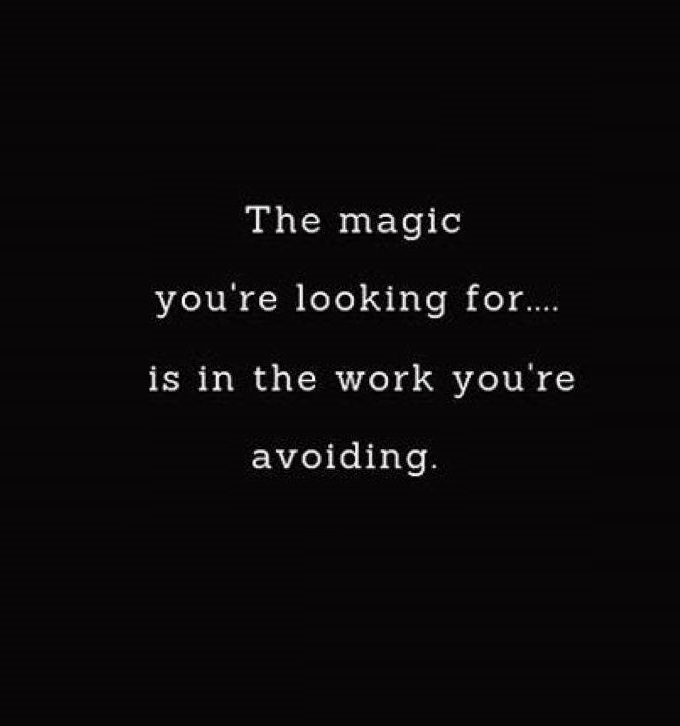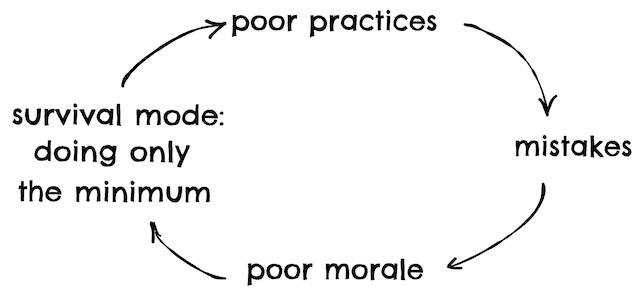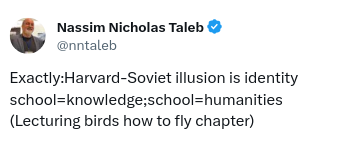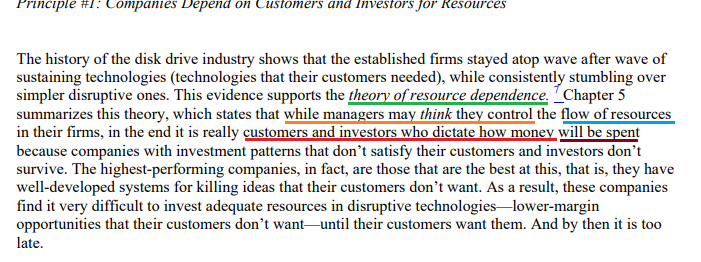Week 5: Mindset, the key to everything
SCRUM Week 5
📘 Summary: SCRUM Week 5 - Mindset, the key to everything
Week 5 of SCRUM focuses on the pivotal role of mindset in personal and professional success.
The mindset, defined as a set of beliefs shaping one’s perception of the world, influences decision-making, habits, and problem-solving.
Stanford psychologist Carol Dweck’s research distinguishes between fixed and growth mindsets, emphasizing the transformative power of cultivating a growth mindset. Those with a growth mindset embrace challenges, persist in setbacks, and view effort as a path to mastery, fostering resilience and a passion for lifelong development.
The discussion extends to the importance of purpose in life, emphasizing happiness, impact, and service. The process of understanding personal purpose involves continual self-reflection. Additionally, the episode delves into the benefits of journaling for immediate and long-term health.
The Soviet-Harvard delusion challenges the idea that academic knowledge alone is superior, advocating for a process of random tinkering, heuristics, practice, and apprenticeship.
The shift in management paradigms, customer-centric approaches, and the significance of having “skin in the game” are explored. The concept of antifragility is introduced, encouraging individuals and organizations to thrive and grow stronger in the face of adversity.
Keywords: SCRUM Week 5 - Mindset, the key to everything
Mindset, Growth & Fixed Mindset, Purpose, Soviet-Harvard Delusion, Skin in the Game, Antifragility, Control, Traditional Management Approaches vs. Customer-Centric Approaches, Journaling, Entrepreneurial Culture.
1 Mindset, overview
Your mindset is a set of beliefs that shape how you make sense of the world and yourself. It influences how you think, feel, and behave in any given situation. It means that what you believe about yourself impacts your actions and output.
It is also decisive in decision-making process, creating habits and at problem-solving.
According to Stanford psychologist Carol Dweck, your beliefs play a pivotal role in what you want and whether you achieve it.1 Dweck has found that it is your mindset that plays a significant role in determining achievement and success.
Mindsets can influence how people behave in a wide range of situations in life. For example, as people encounter different situations, their mind triggers a specific mindset that then directly impacts their behavior in that situation.
2 Fixed vs Growth mindset
I’ve seen so many people with this one consuming goal of proving themselves in the classroom, in their careers, and in their relationships.
Every situation calls for a confirmation of their intelligence, personality, or character.
Every situation is evaluated: Will I succeed or fail? Will I look smart or dumb? Will I be accepted or rejected? Will I feel like a winner or a loser?
—— Carol Dweck
Carol Dweck’s groundbreaking work explores the dichotomy between fixed and growth mindsets.
- In a fixed mindset, individuals perceive abilities as static traits, leading to a desire to appear intelligent and an aversion to challenges. This mindset can hinder learning and resilience.
- In contrast, a growth mindset involves the belief that abilities can be developed through dedication and perseverance.
Dweck’s research underscores the transformative power of cultivating a growth mindset. Those with a growth mindset embrace challenges, persist in the face of setbacks, and view effort as a path to mastery. This mindset not only enhances learning but also fosters resilience and a passion for lifelong development. Dweck’s insights have far-reaching implications, influencing educational practices, workplace dynamics, and personal development strategies, emphasizing the profound impact mindset can have on the journey toward success and fulfillment.
3 Survival Mindset
A survival mindset in a context where each action is perceived as life or death, despite the absence of real risk or threat, can be characterized by several key elements:
If you are involved in a violent event… you will need a real Survival Mindset.
- Stress Management:
- Stress Resilience: The ability to manage and cope with stress is crucial. Individuals must develop resilience to withstand high-pressure situations without succumbing to overwhelming stress.
- When individuals grapple with an inability to manage stress within the context of a survival mindset, the repercussions are far-reaching. Excessive stress, if not effectively navigated, can lead to burnout, jeopardizing physical and mental health.
- The strain may manifest in impaired decision-making, diminishing cognitive functions crucial for navigating life-or-death scenarios.
- Additionally, strained relationships, heightened irritability, and communication challenges become prevalent.
- Stress Resilience: The ability to manage and cope with stress is crucial. Individuals must develop resilience to withstand high-pressure situations without succumbing to overwhelming stress.
- Decision-Making Approach:
- Inability to Say No: A strong sense of urgency may lead to a reluctance or inability to refuse requests or opportunities, as every action is seen as critical for survival.
- Sense of Urgency: A pervasive feeling of urgency accompanies the survival mindset, driving individuals to act quickly and decisively.
- All or Nothing Actions: Individuals may adopt an “all or nothing” approach, perceiving each action as a make-or-break endeavor.
- Resource Utilization:
- Resource Maximization: There is a tendency to maximize the use of available resources, as if every opportunity is a potential lifeline.
- Hyperactivity: Individuals may exhibit a constant state of hyperactivity, driven by the belief that idle moments could be detrimental.
- Risk Orientation & Adaptability:
- Risk Tolerance: A heightened tolerance for risk is a common trait, as individuals may be more willing to take on challenges or make bold decisions.
- Adaptability: Given the unpredictable nature of a survival mindset, adaptability becomes a key trait. The ability to quickly adjust to changing circumstances is crucial for navigating perceived life-or-death scenarios.
3.1 Mindset matters
Did you know that professionals who demonstrate a mindset of Growth show significantly higher levels of resilience, wellbeing, learning agility and emotional intelligence?
Survival vs. Growth Mindset via Caspar de Carteret’s Post
Yet a performance-limiting 66% of people are stuck in Survival.
4 Purpose
“The two most important days in your life are the day you are born and the day you find out why.”
―― Mark Twain
“The mass of men lead lives of quiet desperation. What is called resignation is confirmed desperation…
A stereotyped but unconscious despair is concealed even under what are called the games and amusements of mankind.
There is no play in them, for this comes after work. But it is a characteristic of wisdom not to do desperate things.”
―― Henry David Thoreau
4.1 What do we want from life?
The first step is to understand what we want from life. Although the answer is unique for each of us, there is a general answer underlying our responses, a common canvas and palette awaiting our brush strokes. At the most basic level, we all want:
- To be happy. Also described as “fulfillment,” “life satisfaction” or “feeling good.” A happy life is built with experiences of pleasant mood, meaning and engagement.
- To have an impact. People sometimes call this “success” or “making the world a better place.” When one asks “Do I matter?” he is asking whether he affects the world in a meaningful way. A simple way of thinking about impact is “helping others.” While “helping others” is typically associated with non-profit work, we can view all work through the lens of service.
- On a long enough time scale, products, services and roles must be valuable to someone or they will not last. It should be noted that the rewards associated with impact (compensation, recognition, etc) are only worthwhile in so far as they lead to our happiness or service to others (such as providing for our family).
4.2 Your Personal Purpose
The purpose process, then, is a series of questions you ask yourselves throughout your life.
Day by day, you affirm your worthiness to lead a happy life and your ability to make a positive impact on the world. You endeavor to discover what is most powerful, most motivated and most moral in you and seek to use that to serve the needs of others.
4.3 Journaling
20 de nov. 2023 Huberman Lab
In this episode, I explain a specific writing protocol shown in hundreds of scientific studies to significantly improve immediate and long-term health. I explain how to implement this specific protocol, which takes only four days and 15-30 minutes per day.
I also explain the mechanism for how the four-day writing protocol affects neuroplasticity (brain rewiring) and brain function in the short and long term. I explain how these brain changes positively impact our physical health, including our system’s immune function and thus our ability to combat infections, improve sleep, reduce feelings of physical and emotional pain, lower anxiety, and bring about healing from traumas.
This episode ought to be of interest to anyone seeking better mental and/or physical health through the use of brief yet highly effective science-supported protocols.
4.4 Mindset goal
5 The Soviet Union delusion
Soviet-Harvard dellusion is that academic knowledge is superior and that we must understand the mechanism in order to understand the effectiveness of phenomenology.
The Soviet-Harvard Delusion: Real knowledge comes from the process of Random Tinkering (antifragile) → Heuristics (technology) → Practice and Apprenticeship –> Random Tinkering (antifragile) → Heuristics (technology) → Practice and Apprenticeship
6 Who is on control
The shift in management paradigms from the traditional approach of strict control in the 1970s to a more customer and investor-centric approach reflects broader changes in the business landscape, economic environment, and evolving theories of management. Here are some key factors that have contributed to this shift:
- Globalization: In the 1970s, businesses were generally more localized, and global competition was not as intense as it is today. With the advent of globalization, companies have had to adapt to a more interconnected and competitive world. This shift necessitated a focus on understanding and meeting the needs of diverse customer bases across different regions.
- Technological Advances:& Information Age:
- The rise of the information age, particularly with the widespread adoption of the internet, has empowered consumers with access to vast amounts of information. This has given rise to more informed and discerning customers who demand transparency, quality, and responsiveness from the companies they engage with.
- Advances in technology have enabled more efficient communication, data analysis, and production processes. Companies now have the tools to gather and analyze customer feedback in real-time, allowing them to tailor products and services to meet customer demands more effectively.
- Rise of Shareholder Value and Private Equity: In the 1970s, the focus was often on maintaining stable operations and hierarchical control. Over time, there has been a shift toward a greater emphasis on shareholder value. This change has been driven by the belief that by maximizing shareholder value, companies can attract more investment, which is essential for growth and competitiveness.
- Customer-Centric Approaches: The concept of being customer-centric has gained prominence. Instead of just producing what a company thinks is best, there is a greater emphasis on understanding customer needs, preferences, and feedback. Companies that prioritize customer satisfaction are often more successful in building brand loyalty and gaining a competitive edge.
- Agile and Collaborative Management: The hierarchical, top-down management style of the past has given way to more agile and collaborative approaches. With the pace of change in the business environment, companies need to be nimble and responsive. This requires empowering employees at all levels to contribute to decision-making and innovation.
- Rise of Entrepreneurial Culture: The entrepreneurial spirit has become more valued within organizations. Managers are encouraged to think creatively, take calculated risks, and foster innovation. This contrasts with the more bureaucratic and risk-averse culture that was prevalent in some/most organizations in the 1970s.
7 Skin in the game
“Skin in the game” is a concept popularized by author Nassim Nicholas Taleb. In simple terms, it means that a person should have a personal stake or investment in a situation. When someone has “skin in the game,” they have something to lose or gain based on the outcome. This concept is often applied to decision-making and responsibility.
For example, if you’re giving advice on investments, having “skin in the game” means you have your own money invested in a similar way. This ensures that the advice-giver has a personal interest in providing sound and thoughtful guidance since they stand to gain or lose alongside those who follow their advice.
The idea is that when people have a direct, personal connection to the consequences of their decisions, they are likely to make more careful and informed choices, as they are personally accountable for the outcomes.
Most people you run into in real life… plumbers, taki drivers, accountants, tax advisors, garbage collecotrs… pay a price for their mistakes.
– Nassim Nicholas Taleb, Skin in the game
8 Antifragile
Antifragile is another concept introduced by Nassim Nicholas Taleb. It refers to systems, entities, or things that not only withstand shocks and uncertainty but actually benefit and improve from them. In other words, antifragility goes beyond mere resilience; it’s about thriving and growing stronger in the face of adversity.
Taleb contrasts antifragility with fragility and robustness.
- Fragile things break under stress,
- robust things resist damage but don’t necessarily get better,
- while antifragile things actively gain from disorder.
An example Taleb often uses is the mythological Hydra. Cut off one of its heads, and two may grow back. The Hydra is antifragile—it becomes stronger through adversity.
In practical terms, individuals, systems, or organizations that embrace antifragility don’t just survive disruptions; they use them as opportunities for growth and improvement. This concept encourages a mindset that views challenges and uncertainties not as threats to be avoided but as chances to become more adaptable, resilient, and ultimately, stronger.
Anitfragile rules
- Stick to simple rules
- Build in redundancy and layers (no single point of failure)
- Resist the urge to suppress randomness
- Make sure that you have your skin (soul) in the game
- Experiment and tinker — take lots of small risks
- Avoid risks that, if lost, would wipe you out completely
- Don’t get consumed by data
- Keep your options open
- Focus more on avoiding things that don’t work than trying to find out what does work
- Respect the old — look for habits and rules that have been around for a long time
9 The divided mind
The divided nature of our reality has been a consistent observation since humanity has been sufficiently self-conscious to reflect on it. [… He names a few key examples …] What all these point to is the fundamentally divided nature of mental experience. When one puts that together with the fact that the brain is divided into two relatively independent chunks which just happen to mirror the very dichotomies that are being pointed to — alienation versus engagement, abstraction versus incarnation, the categorical versus the unique, the general versus the particular, the part versus the whole, and so on — it seems like a metaphor that might have some literal truth. But if it turns out to be ‘just’ a metaphor, I will be content. I have a high regard for metaphor. It is how we come to understand the world.
– Ian McGilchrist
In “The Divided Brain”, McGilchrist digests study after study, replacing the popular and superficial notion of the hemispheres as respectively logical and creative in nature with the idea that they pay attention in fundamentally different ways, the left being detail-oriented, the right being whole-oriented.
These two modes of perception cascade into wildly different hemispheric personalities, and in fact reflect yet a further asymmetry in their status, that of the right’s more immediate relationship with physical bodies (our own as well as others) and external reality as represented by the senses, a relationship that makes it the mediator, the first and last stop, of all experience.
10 From Coca-cola hilltop to Nixon’s purpose of life
10.1 Coca-Cola commercial “Hilltop”
Interpreting the Coca-Cola commercial from 1971, known as “Hilltop”, through the lens of Ian McGilchrist’s right hemisphere perspective involves focusing on its emotional and experiential elements, emphasizing connection, unity, and the present moment. The right hemisphere is often associated with holistic thinking, creativity, and a sense of interconnectedness.
In this interpretation, the commercial can be seen as a celebration of shared human experiences, emphasizing the joy of coming together. The vibrant scenes of people from different cultures atop a hill, singing “I’d Like to Buy the World a Coke,” can be viewed as a representation of a harmonious and utopian world. The right hemisphere tends to appreciate the beauty of the whole rather than breaking it down into individual components, so the emphasis is on the collective experience of enjoying a Coca-Cola.
The commercial’s setting on a hilltop, away from the complexities of daily life, may be seen as an escape into a simpler, more idealized reality. It portrays a vision of a world where people connect on a deeper, emotional level, transcending the divisions that exist in the everyday world. The right hemisphere often engages with experiences in a more intuitive and non-linear manner, so the dreamlike quality of the commercial may resonate with this perspective, emphasizing feelings and connections over logical analysis.
The absence of specific product details or practical considerations in the commercial aligns with the right hemisphere’s tendency to focus on the overall experience rather than the details. It fosters a sense of unity and common humanity, tapping into the emotional and experiential aspects of sharing a simple pleasure like a Coca-Cola.
10.2 Great Leap Forward in China during the late 1950s
One historical example of hierarchical structures dominated by left hemisphere thinking, leading to disastrous consequences, is the planning and execution of the Great Leap Forward in China during the late 1950s. This initiative was spearheaded by Mao Zedong, the leader of the Chinese Communist Party, and aimed at rapidly transforming China from an agrarian society into an industrialized socialist nation.
Great Leap Forward (1958-1962):
- Left Hemisphere Dominance: The campaign was characterized by an authoritarian, top-down approach, reflecting left hemisphere traits such as centralized planning, strict control, and a focus on quantitative measures. The emphasis was on achieving ambitious economic and agricultural targets through detailed plans and directives.
- Disastrous Consequences: The rigid and hierarchical structure of the Great Leap Forward led to catastrophic results. Agricultural practices were restructured without considering the practical knowledge of local farmers, and unrealistic production targets were set. The emphasis on quantity over quality and the suppression of dissenting opinions resulted in widespread famine, economic collapse, and a significant loss of life.
- Lack of Feedback and Adaptability: The hierarchical nature of the campaign stifled open communication and constructive feedback. Lower-level officials and workers were often afraid to report failures or question the feasibility of the set goals, contributing to the implementation of impractical policies and the concealment of actual conditions.
The Great Leap Forward resulted in one of the most significant humanitarian disasters in history, with estimates of tens of millions of deaths due to famine, malnutrition, and related causes. This example underscores the potential dangers of hierarchical structures dominated by left hemisphere thinking when practical realities, local knowledge, and adaptability are disregarded in pursuit of ideologically driven goals.
10.3 Nixon’s purpose of life
This attitude toward hard work and a sense of purpose was one of his most deeply ingrained beliefs.











